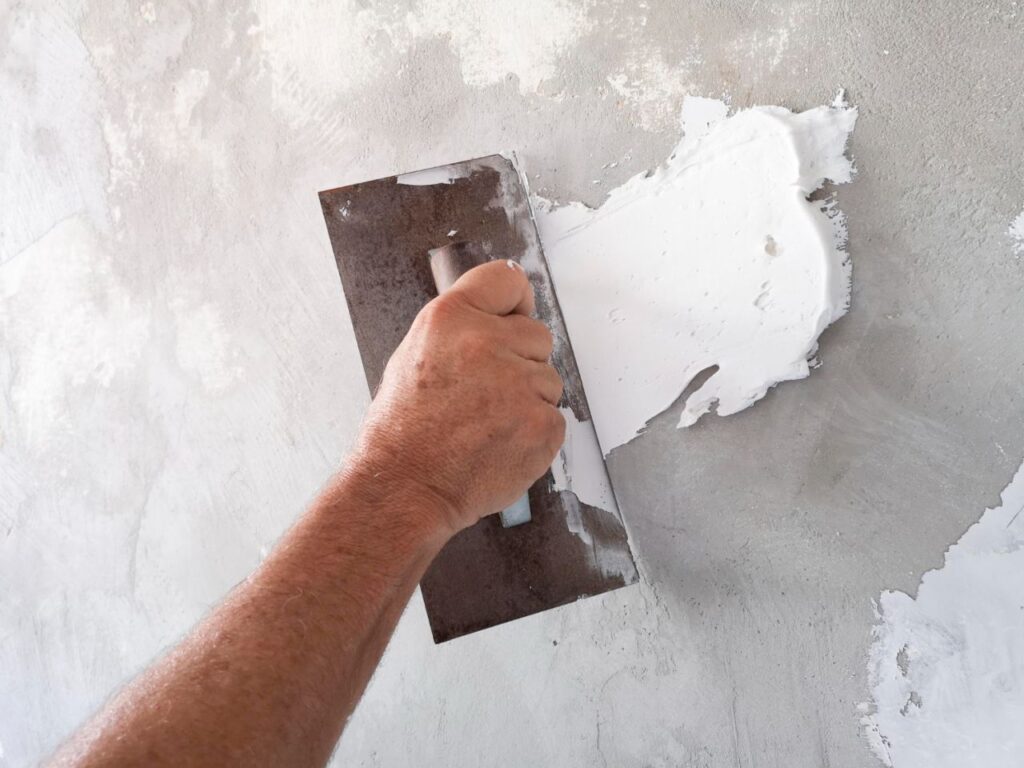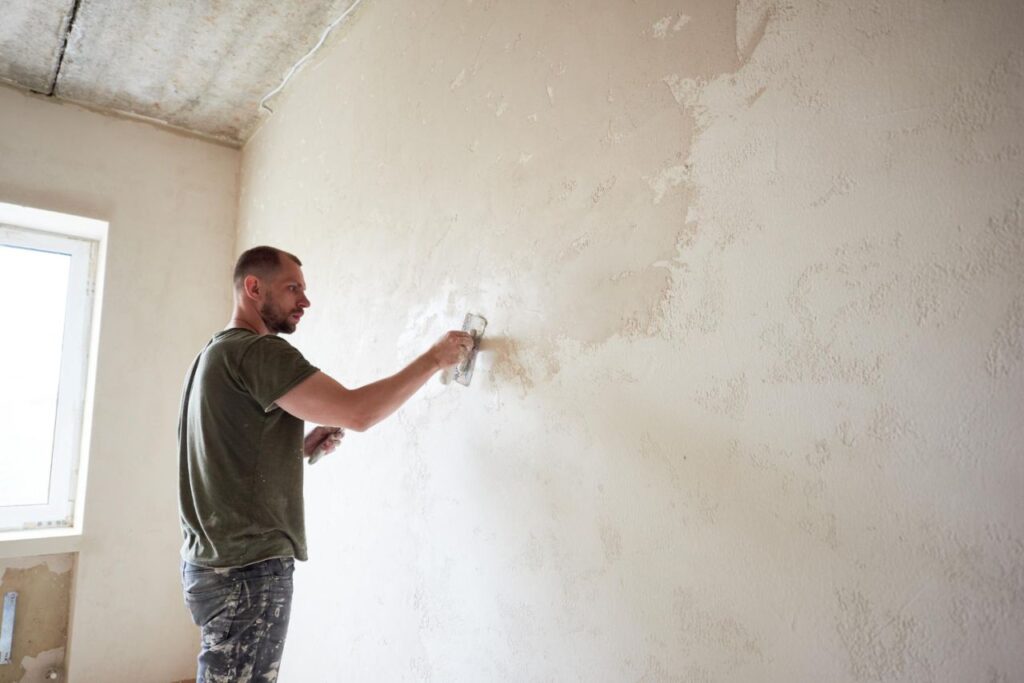Have you ever been awed by a freshly refurbished store’s immaculate walls and finishes? Plasterers confront a multitude of obstacles behind the scenes in store fitouts. Despite all the challenges, how do they design the most stunning interiors that clients can’t get enough of?
Plastering is an essential part of shop fitouts that requires skill and accuracy. Plasterers are essential in making spaces look new by tackling problems including uneven surfaces, short timelines, and specific architectural specifications. A combination of expertise and creativity is needed to overcome these challenges.
Plasterers face more than just these problems, though. Come with us as we learn more about the ins and outs of plastering for shop fitouts from industry veterans. Discover their strategies for overcoming typical obstacles and achieving shop fitouts surpassing expectations. Do you want to know what goes into creating perfect finishes? How about we start this adventure together?
Understanding Shop Fitouts
Shop fitouts are renovations to a store’s interior to improve the space’s utility, visual appeal, and general marketability. One of the main goals of shop fitouts is to make it easier to sell products and provide a better experience for customers. It entails arranging the retail space’s fixtures, fittings, and other components to maximise the available space while enhancing its aesthetic appeal.
A shop fitout may involve more than just the layout and style of the space; it can also involve the installation of lighting, signage, flooring, and furniture. If you want your store to be more successful and profitable, you need to make sure that the space matches your brand and appeals to your target market.
The Importance Of Plastering In Reaching Shop Fitout Objectives
Plastering is important for store fitouts because it helps with the space’s look and functionality. A few important points are these:
Surface Finishes
Plastering is the foundation for many surface treatments, such as wallpaper, paint, or textured coatings. The finish choice greatly impacts the store’s aesthetics, making it more visually appealing and in line with the brand.
Partitioning And Walling
Partitions and walls in retail spaces are often made of plasterboard. As a result, the store’s layout and functionality can be improved by establishing separate sections or zones.
Ceiling Design
Decorative ceilings and other features, such as suspended ceilings, require plastering. The ceiling design can elevate the store’s ambience and enhance its visual attractiveness.
Acoustic Considerations
You can improve the store’s acoustics by using plasterboard. This is of utmost importance in retail settings, where maintaining a peaceful environment for clients is paramount.
Typical Plastering Issues And Their Root Causes
A plasterer may only be necessary for some issues with plastering in the house. Sometimes, all it takes to remedy a few minor problems around the house is a little do-it-yourself (DIY) magic. If you see any other problems with your plaster, such as water leaks, you should address them immediately because they could indicate more significant difficulties. Understanding the most common causes of plaster difficulties can help you decide which ones need fixing right away and which ones can wait.
Cracks
Three primary varieties of plaster cracks can be identified.
Hairline Cracks
These fissures are very fine and often hard to see. They can run in any direction and appear on any plastered surface. As far as most people are concerned, they are simply a natural part of getting older. Cracks can normally be left alone unless they are significantly worsening. You may easily patch them with some putty, paint, and a helpful do-it-yourself plaster restoration tutorial.
Delaminating Cracks
If you see cracks like this, the plaster peels away from the lath. The plaster on the wall or ceiling can be poised to crumble anytime. The fissures should be horizontal or vertical. Because they are perpendicular to the studs, they could give the impression of being a grid. A specialist should be summoned immediately upon discovering delamination cracks.
Settlement Cracks
You could find these in older homes and newer or freshly refurbished ones. Typically, you’ll see multiple cracks pointing in the same direction. They show up when the house’s foundation is sinking or settling. You should check on these fissures often to see if they are expanding. If so, you’ll have to address the plaster problem and the underlying source of the cracking, which may necessitate costly foundation repairs.
Discolouration
The presence of brown water stains on plaster usually indicates a leak. Regarding water damage, you must not scrimp and save. Before you can fix the plaster, you must find and fix the source of the leak. Identifying the source and applying appropriate solutions is essential for effectively resolving plaster discolouration, a prevalent issue in shop fit-outs. The following factors can cause plaster discolouration, and the following remedies may help:
Moisture Issues
- Cause: Mould development and discolouration can result from moisture seepage.
- Solution: Make sure there is enough air circulation and fix any leaks immediately. Put up a layer of paint that can withstand moisture, and use a plasterboard.
Humidity
- Cause: Plaster can discolour over time due to high humidity levels.
- Solution: With the right ventilation systems, you can steady the relative humidity levels. In places where the humidity is often high, dehumidifiers could be useful.
Inadequate Primer
- Cause: Discoloration can occur if priming is not done properly before painting.
- Solution: Before painting, apply a high-quality primer. Make sure the primer won’t react negatively with the paint or plaster.
Low-Quality Paint
- Cause: Paints of lower grades could be more likely to become discoloured.
- Solution: Put money into high-quality, environment-specific paints that are resistant to dampness. In high-traffic areas, it may be wise to use paint that is easy to wash or resistant to stains.
Bubbling
Following discolouration, bubbling in your plaster indicates that water has damaged your plaster. If you notice any bubbling, the first step is to identify and address the source of the water. Afterwards, the damaged plaster will have to be removed and then repaired.
Solution to Fix
First, figure out where the water is leaking and fix it. First, let the wall dry before removing the damaged plaster and any loose debris. Apply an oil-based primer seal to the cleaned and dry surface, then paint over it.
Bulging
When plaster bulges, it can mean that the plaster has separated from the lath, as in delamination fractures, or that water damage has occurred. The plaster must be reattached if it gives way when pressing it. Make haste to get in touch with a competent plasterer.
Holes
These are the most noticeable plaster issues, with several potential causes. Plaster can be damaged by roughhousing or by a particularly obnoxious dog or group of children. Any do-it-yourselfer can easily repair holes in the plaster. If you see any holes in your plaster or other structural elements, it’s best to replace them before they worsen and to protect the insulation and wires within the wall from potential exposure.
FAQs About Plasterer
What Are The Common Challenges Faced During Plastering In Shop Fitouts?
Plasterers need to carefully assess the existing conditions, plan meticulously, and use flexible techniques to adapt to the unique demands of shop fitouts. Coordination with other construction teams is essential to ensure a cohesive and efficient workflow.
How Do You Deal With Uneven Surfaces When Plastering During Shop Fitouts?
Plasterers may use techniques such as layering or applying thicker coats strategically to even out surfaces. Additionally, employing high-quality plaster mixtures and precise application methods helps in creating a uniform and aesthetically pleasing finish.
What Measures Can Be Taken To Ensure The Plastering Process Aligns With Tight Shop Fitout Schedules?
Efficient planning is key. Plasterers should collaborate closely with project managers, prioritize tasks, and allocate resources effectively. Utilizing quick-drying plaster materials and optimizing work schedules can help meet tight deadlines without compromising quality.
How Can Plastering Be Seamlessly Integrated With Other Construction Elements During Shop Fitouts?
Communication and coordination between different trades are crucial. Plasterers should work closely with other construction teams, sharing plans and timelines to ensure a synchronized approach. Using adaptable plastering techniques that accommodate these elements is also essential.
What Steps Can Be Taken To Address Potential Issues That May Arise After The Completion Of Plastering In Shop Fitouts?
Regular inspections and quality checks during and after plastering are vital. Offering warranties and maintenance recommendations can provide clients with confidence in the durability of the plastered surfaces. Open communication channels for addressing any post-installation issues promptly should also be established.
Tips To Hire The Best Plasterer
- Seek the authentic background.
- For more information, read reviews on the internet.
- Make sure the licence is up to date.
- Verify outstanding craftsmanship
- Request suggestions
Is a building renovation in your future? The next step in increasing your property’s value is to locate a dependable plasterer who offers various plaster supplies. Make sure to follow the suggestions provided earlier. The two most common kinds of plastering services provided by professionals in the field are:
Domestic Plastering
Plasterers are committed to offering you high-quality residential plastering services, whether you need repairs, patches, additions, or renovations around the house. Their quality services, such as P50 shadow line, ornamental cornice, ceiling panels, bulkheads, ceiling roses, square sets, battened ceilings, and archways, will make your home seem stunning.
Commercial Plastering
Timely and skilled completion of the plastering task is crucial to commercial plastering. We at Commercial Plasterers are dedicated to giving you effective plastering services for the fit-out of your factories, offices, or retail spaces. You can also improve your commercial property by using other commercial plastering techniques like tile grid ceilings, suspended ceilings, P50 shadow lines, partition walls, bulkhead ceilings, and solid plastering.
Plastering is the most challenging activity since there are so many technical details you must be knowledgeable about and remember, even though it appears to be an easy job. An important aspect of plastering is being aware of its flaws and how to identify them to rectify them before they cause additional damage.
Commercial Shop Fit Out Mistakes: How To Avoid Them?
Planning and paying close attention to detail are the two most important factors in completing a commercial shop fit out perfectly. Your space’s success depends on every decision, from the materials you use to the layout. Here, we’ll look closer at the fitout mistakes many business owners make without realising it. Recognising these potential problems is the initial stage in developing a store atmosphere that can draw in and keep consumers. In light of this, we have compiled a list of the top five mistakes that commercial shop fitouts often suffer from, committed by well-intentioned but ignorant business owners.
Poor Layouts
A well-organized storefront highlighting popular items and facilitating easy navigation is the holy grail of commercial shop fitouts. It would be best to avoid a confusing labyrinth with missing or incorrect signs, too-small paths, and bad directions at all costs.
Inadequate Lighting
Shoppers will avoid your wares-be they books, clothing, or jewellery-if illuminated poorly. Lighting is an important component of any successful interior design project. Without it, consumers will have difficulty seeing the products, reading the labels, and feeling that the store is spacious and bright. Unless you’re a nightclub, a completely black interior doesn’t do much to improve a customer’s shopping experience.
Small Pos Counters
The need for sufficient space for customers to complete their purchases is a common issue in commercial store fitouts. While shopping, customers should have enough space to set their purses or other belongings on the counter in a secure and easily accessible location. In addition, seasoned experts in the field of interior design will inform you that having room for displays of impulse purchases is crucial to maximising your profits.
Blank Walls
We could all use a little visual stimulation occasionally, but new commercial shop fitouts that don’t utilize walls are a missed opportunity. Depending on your merchandise and consumer base, wall spaces are perfect for displaying shelving, hanging racks, branding, logos, signage, and even complementary artwork. White wall space and functional space are subtly juxtaposed in contemporary home design to maximise the buyer’s experience without overwhelming them visually.
Lack Of Speed Bumps
At these junctures, customers have an opportunity to interact with your brand. Speed bumps are visual interruptions in commercial store fitouts that let shoppers look at branded displays, groups of complementing items, or seasonal displays, breaking up the monotony of rows of clothing, books, or shoes, for example. Visual breaks, an often-overlooked marketing tactic, are essential for improving your customers’ purchasing experiences.
Conclusion
For beautiful shop interiors, plastering is an important part of shop fitouts that needs to be done with skill and accuracy. It means dealing with problems like uneven surfaces, tight deadlines, and strict design requirements. These problems must be solved by plasterers in order to make places that look good and fit the brand and target market.
Plastering is an important part of store fitouts because it improves the look and usefulness of the space. Acoustics, surface finishes, wall and partitioning design, and ceiling design are all important parts of the area.
Plaster problems can be broken down into three main types: tiny cracks, delaminating cracks, and settlement cracks. Hairline cracks are small holes that can be fixed with putty, paint, or a do-it-yourself guide to plaster repair. Settlement cracks happen when the base sinks or settles, and delamination cracks happen when the plaster peels off the lath.
To sum up, painting is an important part of successful and profitable store fitouts because it makes sure that the space fits the brand and appeals to the target market. Knowing about common painting problems and what causes them can help you fix them quickly.
In shop fit-outs, discoloured plaster is a regular problem that is often caused by moisture problems, high humidity, bad primer, and cheap paint. To fix this, make sure there is enough air flow, paint with paint that doesn’t absorb water, and use drywall. If the plaster is bubbling, it means there is water damage that needs to be fixed. First, find where the water is coming from and fix it. Before painting, use an oil-based primer seal to cover the area that has been cleaned and dried.
If the cement bulges, it could mean that it has come away from the lath or that water has damaged it. If the plaster comes off when you press on it, put it back on and call a professional plasterer. Fix any holes in the plaster or other building materials before they get worse, and keep the insulation and wires inside the wall safe.
To find the best plasterer, look for a real past, read online reviews, make sure the licence is up to date, and make sure the work is of high quality. If you want to fix up a building, you should find a reliable plasterer who sells a range of plaster goods. Residential plastering and business plastering are the two most common types of plastering that professionals do.
Plastering is hard to do because it involves a lot of technical details. When fitting out a business store, it’s important to pay close attention to the details and plan ahead. The top five mistakes are bad plans, not enough lighting, small point-of-sale (POS) counters, blank walls, and not having any speed bumps.
A good storefront needs to be well-organized, easy to find your way around, have enough lighting, have small POS counters, and have blank walls. By taking care of these problems, you can make your store look nice and be interesting, which will bring in people.
Content Summary
- Shop fitouts involve renovating interiors to enhance utility, appeal, and marketability.
- Fitouts include layout redesign, lighting, signage, flooring, and furniture installation.
- Plastering is crucial in shop fitouts for aesthetics and functionality.
- Plastering provides a base for surface treatments like paint and wallpaper.
- Plastered partitions and walls help in spatial zoning within retail spaces.
- Plastering contributes to ceiling designs, impacting the store’s ambience.
- Acoustic improvements in retail spaces are achieved through plasterboard use.
- Common plaster issues include cracks, discolouration, bubbling, and bulging.
- Hairline cracks in plaster are fine and often part of natural aging.
- Delaminating cracks indicate plaster peeling away from the lath, needing urgent repair.
- Settlement cracks, common in older buildings, signal potential foundational issues.
- Plaster discolouration often indicates leaks and requires immediate attention.
- Moisture issues causing mould and discolouration can be solved with proper ventilation.
- High humidity levels can discolor plaster, which can be mitigated by dehumidifiers and ventilation.
- Inadequate primer before painting can lead to plaster discolouration.
- Low-quality paints increase the likelihood of plaster discolouration.
- Bubbling plaster indicates water damage, requiring source identification and repair.
- Bulging plaster suggests separation from the lath or water damage.
- Holes in plaster are easily noticeable and can be fixed with DIY methods.
- Hiring a professional plasterer involves checking background, reviews, and craftsmanship.
- Domestic plastering services include repairs, renovations, and decorative features.
- Commercial plastering focuses on timely, skilled completion for business spaces.
- Knowledge of plaster flaws and timely rectification prevents further damage.
- Proper planning and attention to detail are vital for successful shop fitouts.
- Poor shop layouts can confuse customers and hinder product visibility.
- Inadequate lighting in stores negatively affects product display and customer experience.
- Small point-of-sale counters limit customer convenience and impulse purchase displays.
- Unused wall space in shops represents a missed opportunity for branding and display.
- Lack of ‘speed bumps’ in-store layout fails to engage customers with strategic displays.
- Creating visually appealing and functional shop spaces challenges plasterers.
- Plasterers tackle uneven surfaces, tight timelines, and specific architectural demands.
- Expertise and creativity are essential for plasterers in overcoming fitout challenges.
- Industry veterans share strategies to achieve exceptional shop fitouts.
- Effective plastering is integral to achieving the desired finish in-store renovations.
- Identifying and solving plastering issues is key in maintaining shop aesthetics.
- Plastering plays a role in creating a store environment aligning with brand identity.
- Regular maintenance of plastered surfaces ensures lasting quality in shop fitouts.
- Addressing plastering challenges requires a blend of technical skill and experience.
- A comprehensive approach to plastering ensures longevity and appeal in shops.
- Constant innovation and adaptation are required in plastering for retail spaces.
- Collaboration with other trades is often necessary for successful shop fitouts.
- Understanding the specific needs of each retail space guides plastering work.
- Customised solutions are often needed for unique plastering challenges in shops.
- Staying updated with the latest plastering techniques benefits shop fitouts.
- Effective communication with clients ensures plastering meets their expectations.
- The choice of plastering materials impacts the final look and durability of the fitout.
- Plastering is a crucial aspect of creating an inviting and functional retail environment.
- A focus on quality and detail in plastering enhances the overall shopfitting project.
- Balancing aesthetic appeal with practicality is key in plastering for shop fitouts.
- Plasterers play a pivotal role in transforming retail spaces through skilled craftsmanship.



